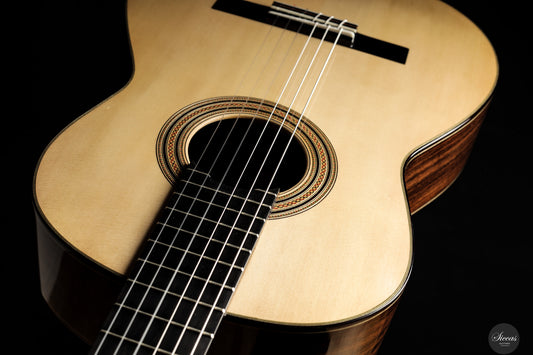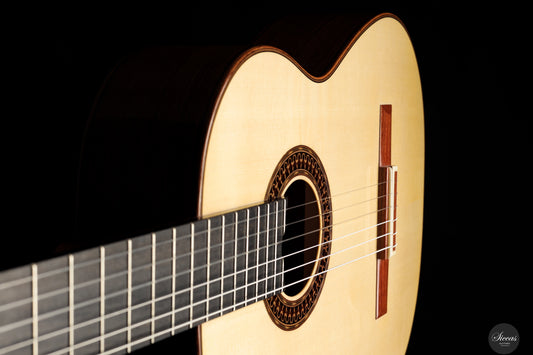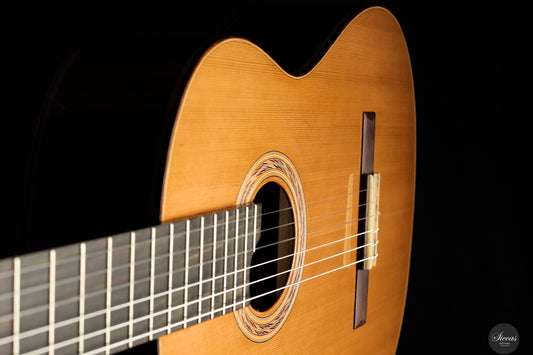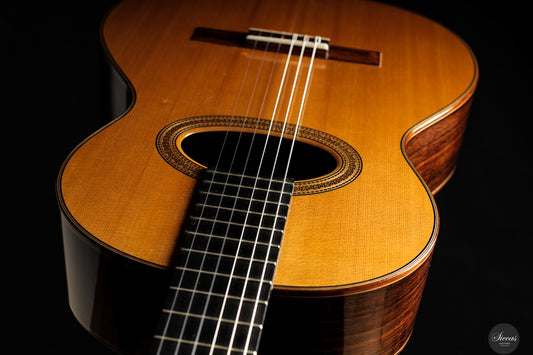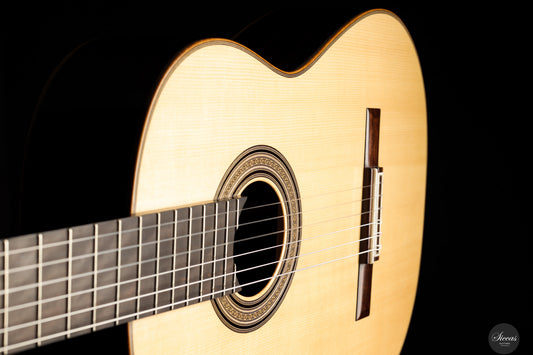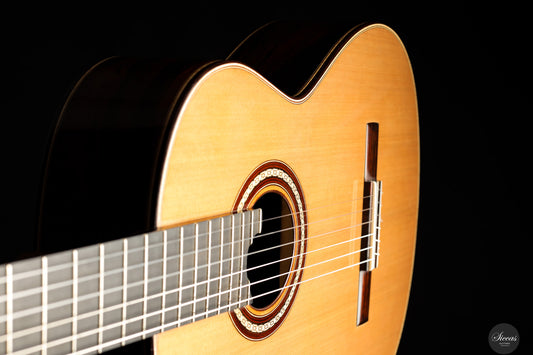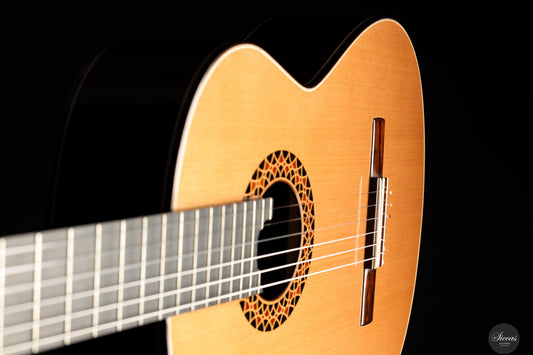Sold
Stephen Hill - 2025 - Doubletop Lattice No.294
Stephen Hill - 2025 - Doubletop Lattice No.294
Details
Details
Luthier:
Stephen Hill
Overview
Overview
























Video overview
Some text about the video block with SEO. Some text about the video block with SEO.


More details about the guitar
About the luthier
Stephen Hill is a British guitar maker based in La Herradura, near Granada in southern Spain. He began his musical life as a flamenco guitarist and later trained as a luthier under the influence of masters such as Antonio Marín Montero and Manuel Reyes. Over the years, Hill has become one of the most respected contemporary builders of Spanish-style guitars. He combines deep traditional knowledge with an openness to new methods and ideas, and has mentored a number of successful luthiers through his teaching. After decades dedicated to traditional construction, Hill has recently expanded into the world of modern concert guitars, particularly double-top instruments. His double-top models are distinguished by their elegant tonal character, exceptional responsiveness, and a strong underlying Spanish identity. This development demonstrates his ability to balance innovation with a deep respect for traditional guitar-making aesthetics.About the guitar
This guitar, No. 294 from 2025, is Stephen Hill’s latest double-top concert model. It features a spruce outer top from Switzerland, seasoned for over 25 years and stored in the Sierra Nevada’s Alpujarras region, laminated over a cedar inner layer with a Nomex core. The bracing is a 5×5 wood lattice system, offering both lightness and structural integrity while preserving tonal subtlety. The back and sides are made from beautifully figured Madagascar rosewood, and the entire guitar is finished with French polish. Tonally, the instrument blends a modern response with a refined Spanish voice. It projects with clarity and power, featuring a slightly nasal core in the midrange that creates a distinctive tonal signature and invites complex color shaping. The trebles are vibrant and responsive, with impressive sustain and excellent separation. Players will notice the guitar’s remarkable playability and immediacy, qualities that allow for nuanced dynamics and articulation, especially in fast passages. An elegant, warm, and expressive instrument that offers the best of both worlds: modern power and traditional beauty.
Otto Rauch is a German guitar maker from the small town of Obermoschel in Rheinland-Pfalz. With over 35 years of experience as a guitar maker, he is one of the German pioneers of double-top construction. After repairing a Matthias Dammann guitar in the early 1990s, Otto Rauch began building doubel-top guitars. At first, he used cedar struts and then a balsa core, a construction he continued to develop over the years. While helping a friend set up his violin making business, Otto Rauch came across the name of the 18th century Venetian violin maker Domenico Montagnana. His cellos are praised for their dark tone, fantastic sound volume and enigmatic construction. As these three attributes reflect Otto’s construction, he adopted the name, and the Domenico Montagnana model was born.























































